It looks like you're using an Ad Blocker.
Please white-list or disable AboveTopSecret.com in your ad-blocking tool.
Thank you.
Some features of ATS will be disabled while you continue to use an ad-blocker.
share:
Ive been mindblown by this recent thread about astrophotography www.abovetopsecret.com...
Although I have always wished to start taking pictures of the cosmos Ive always put it aside thinking it was way too complicated. Best pictures ive took of the moon were with my cellphone and it looks like nothing.
So basically I have zero experience in photography but would love some tips on how to start progressively. What basic equipment to get and how to approach it all.
Would be very grateful.
I have a budget of 1000$ for now that I could put in this project.
Although I have always wished to start taking pictures of the cosmos Ive always put it aside thinking it was way too complicated. Best pictures ive took of the moon were with my cellphone and it looks like nothing.
So basically I have zero experience in photography but would love some tips on how to start progressively. What basic equipment to get and how to approach it all.
Would be very grateful.
I have a budget of 1000$ for now that I could put in this project.
a reply to: Golantrevize
Start with a good tripod!!!
I favor mirrorless cameras like the Panasonic G7. Also great for video...
The Kit lens should suffice but a good zoom will make the experience much nicer.
Should get you under the 1k mark
Start with a good tripod!!!
I favor mirrorless cameras like the Panasonic G7. Also great for video...
The Kit lens should suffice but a good zoom will make the experience much nicer.
Should get you under the 1k mark
a reply to: Golantrevize
Here's some threads to help you get started:
www.abovetopsecret.com...
www.abovetopsecret.com...
www.abovetopsecret.com...
www.abovetopsecret.com...
Here's some threads to help you get started:
www.abovetopsecret.com...
www.abovetopsecret.com...
www.abovetopsecret.com...
www.abovetopsecret.com...
originally posted by: Golantrevize
a reply to: olaru12
What do you mean by mirrorless. What dies it imply? Thx
It means the image goes thru the lens directly to the sensor. Much more efficient.
www.bhphotovideo.com...
a reply to: olaru12
Many cameras also have a mirror lock mode, or like my camera, using Live Mode locks the mirror up to avoid mirror vibration.
However: When it comes to doing most star shots the vibration of the mirror does not last long enough to cause issues with the shot since exposures are going to be 10 seconds or longer and the light being captures is very faint.
Where most run into a problem with the mirror vibration is when taking images of very bright objects while zoomed in, like the Moon, and mostly only after you have gone above 500mm focal length.
ETA: also be aware - trying to use the direct imaging on to the CCD for lining up the shot will not work as the stars are much to faint in most cases to use any type of live mode.
Many cameras also have a mirror lock mode, or like my camera, using Live Mode locks the mirror up to avoid mirror vibration.
However: When it comes to doing most star shots the vibration of the mirror does not last long enough to cause issues with the shot since exposures are going to be 10 seconds or longer and the light being captures is very faint.
Where most run into a problem with the mirror vibration is when taking images of very bright objects while zoomed in, like the Moon, and mostly only after you have gone above 500mm focal length.
ETA: also be aware - trying to use the direct imaging on to the CCD for lining up the shot will not work as the stars are much to faint in most cases to use any type of live mode.
edit on 3/8/2017 by eriktheawful because: (no reason given)
a reply to: eriktheawful
Thanks for that information. My focus is mainly on the video capabilities of a dslr or 4/3 for making films. I should start taking more stills.
Thanks for that information. My focus is mainly on the video capabilities of a dslr or 4/3 for making films. I should start taking more stills.
a reply to: olaru12
Video for astrophotgraphy is mostly for bright objects like the Moon and the planets (Venus, Mars, Jupiter and Saturn).
The stars and nebula are quite faint and take longer exposures. As you know, video is taking many frames per second.
Here is a still shot of the Big Dipper of only 5 seconds:
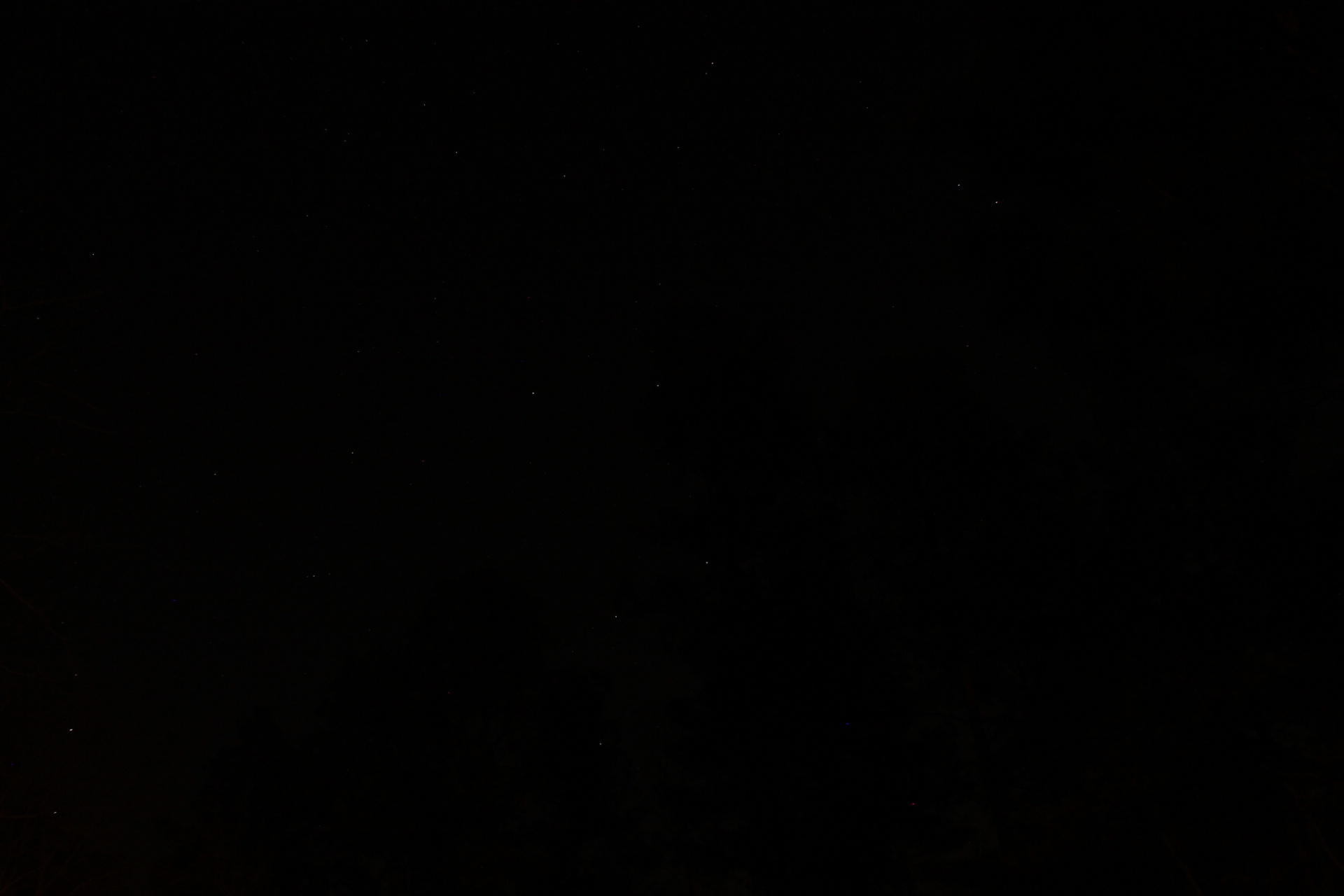
In order to do video or live viewing of the stars and nebula with a camera, you'd need one with some sort of very special and sensitive CCD built into it.
Video for astrophotgraphy is mostly for bright objects like the Moon and the planets (Venus, Mars, Jupiter and Saturn).
The stars and nebula are quite faint and take longer exposures. As you know, video is taking many frames per second.
Here is a still shot of the Big Dipper of only 5 seconds:

In order to do video or live viewing of the stars and nebula with a camera, you'd need one with some sort of very special and sensitive CCD built into it.
A tripod, a DSLR camera (or a mirrorless one), and some wide-angle and telephoto lens.
Then just experiment with ISO and exposure settings, see what gets the best results.
As an example, here's a photo I took using Canon 600D and 50mm prime lens:
Hyades and Pleiades
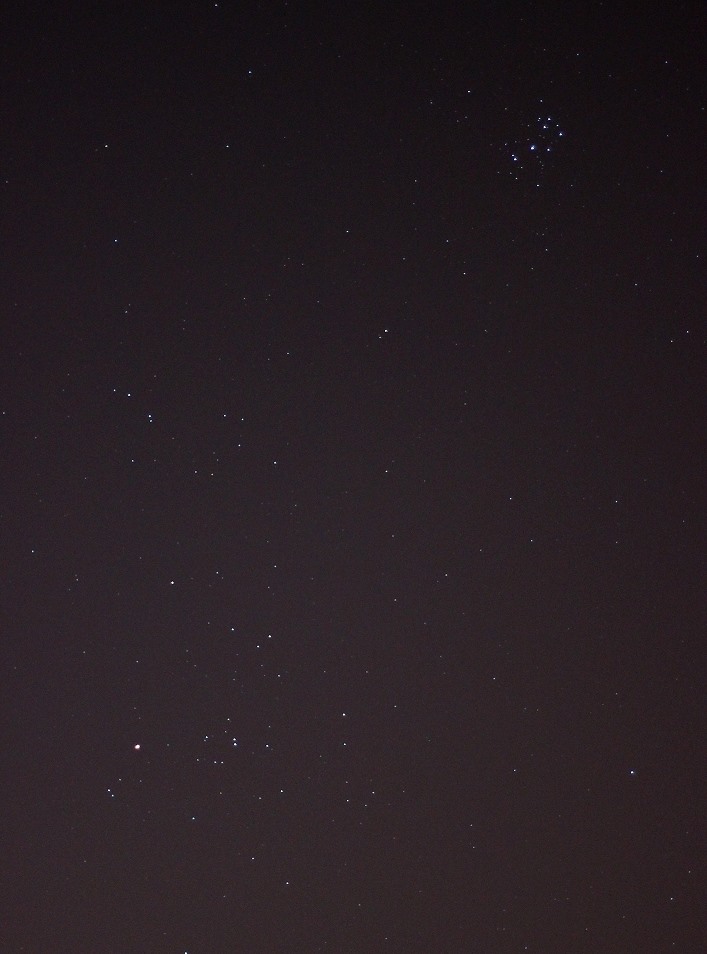
And now for telephoto lens - Canon 600D and Sigma DG lens at 300mm:
Orion
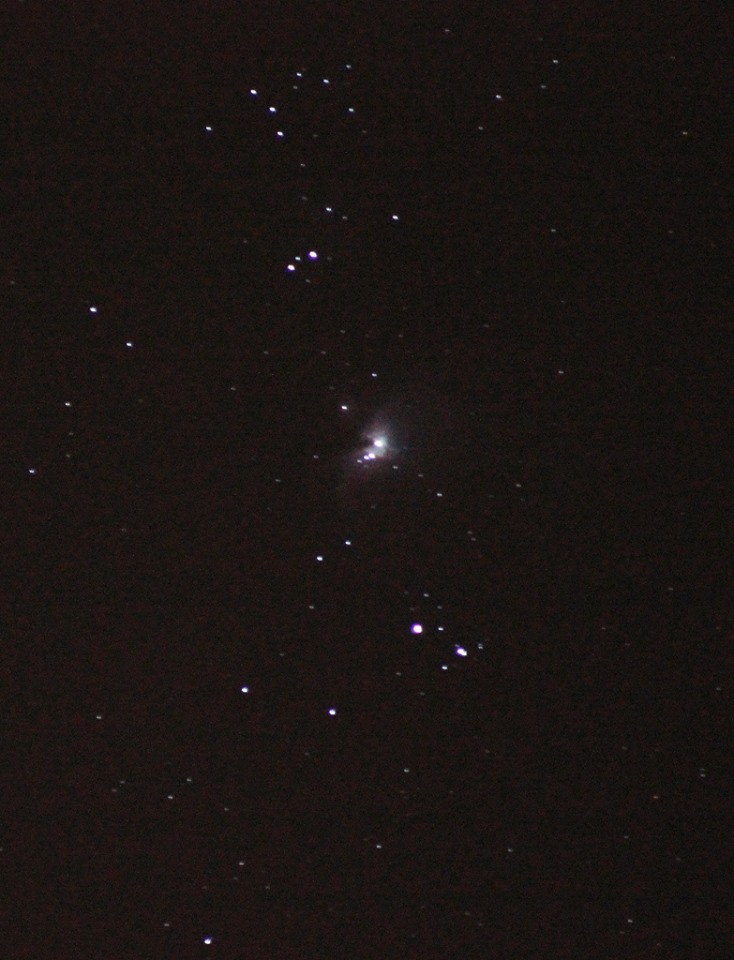
Pleiades
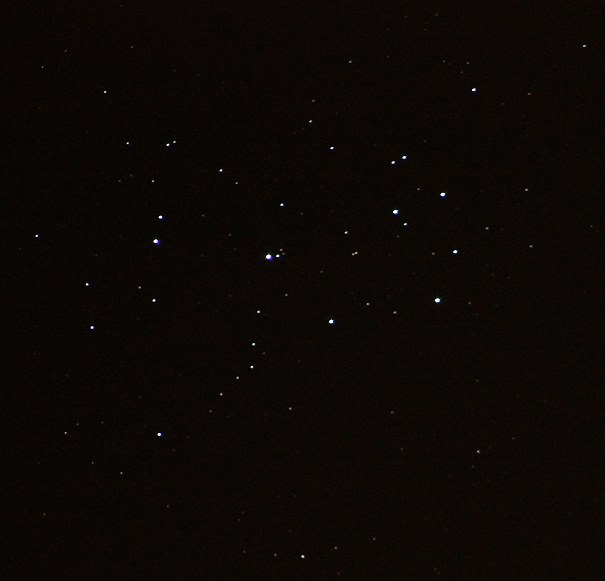
The Moon
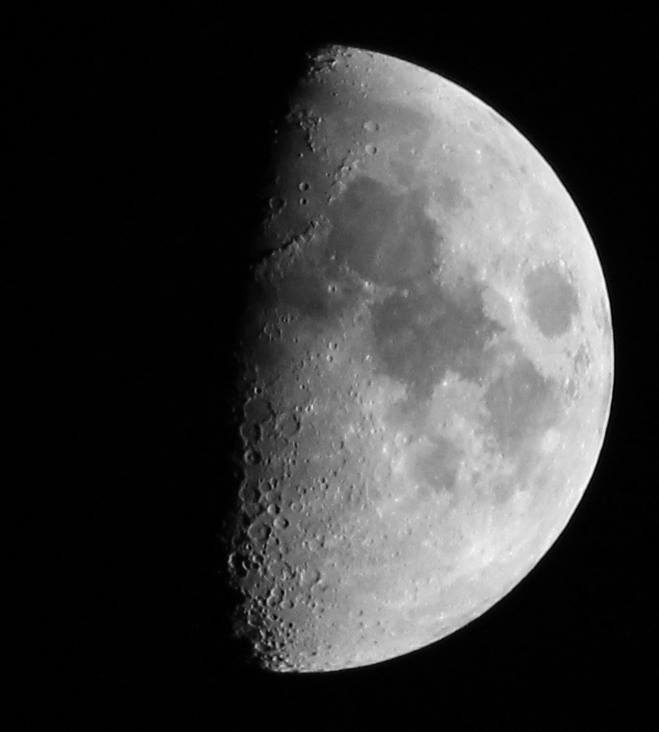
All I did was set the camera to high ISO and 1 to 2 seconds exposure, point the camera at the target, and click the button. (Photographing the Moon requires a much shorter exposure)
Then just experiment with ISO and exposure settings, see what gets the best results.
As an example, here's a photo I took using Canon 600D and 50mm prime lens:
Hyades and Pleiades

And now for telephoto lens - Canon 600D and Sigma DG lens at 300mm:
Orion

Pleiades

The Moon

All I did was set the camera to high ISO and 1 to 2 seconds exposure, point the camera at the target, and click the button. (Photographing the Moon requires a much shorter exposure)
edit on 8-3-2017 by wildespace because: (no reason given)
originally posted by: wildespace
A tripod, a DSLR camera (or a mirrorless one), and some wide-angle and telephoto lens.
Then just experiment with ISO and exposure settings, see what gets the best results.
As an example, here's a photo I took using Canon 600D and 50mm prime lens:
Hyades and Pleiades
And now for telephoto lens - Canon 600D and Sigma DG lens at 300mm:
Orion
Pleiades
The Moon
All I did was set the camera to high ISO and 1 to 2 seconds exposure, point the camera at the target, and click the button. (Photographing the Moon requires a much shorter exposure)
amazing, how do you decide what you will photograph, do you just aim at the sky and look for cool stuff or prepare in advance exactly what you want to photograph on a given night
a reply to: Golantrevize
I can't speak for wildspace, but I can tell you what I do.
On nights when the Moon is out, it's a bit harder to take star shots because the Moon is so bright it can wash out your star shots. So on nights like that, I take images of the Moon.
On Moonless nights, it depends on the time of year for me. Winter and early spring, I tend to concentrate on the constellation of Orion. During the summer months I tend to concentrate on trying to take shots of the Milky Way itself.
Deep space objects (nebula, galaxies, etc), You'll need a mount for your camera to track the shots because the more you zoom in, the less time you have to expose the frame before the object moves.
It's called the Rule of 500. For example, if I use a 35mm lens for a star shot, you take 500 and divide it by 35, and the answer is just over 14. That means you'll only have 14 seconds you can expose the image before you start to get star trails.
So if you use like a telephoto lens, like 500mm, 500 / 500 = 1. So you'd only have 1 second and that's nowhere near enough to take images of faint objects like nebula or galaxies.
In those cases, you'll need a mount that moves the camera with the rotation of the Earth to keep the object from trailing. All this is in one of the links I posted for you in my earlier post.
One thing that helps is to get familiar with the night sky and what is where and at what time of the year. Something that can help you with that is a free program call Stellarium.
It's completely free and you can use it to figure out where things are in the sky.
I can't speak for wildspace, but I can tell you what I do.
On nights when the Moon is out, it's a bit harder to take star shots because the Moon is so bright it can wash out your star shots. So on nights like that, I take images of the Moon.
On Moonless nights, it depends on the time of year for me. Winter and early spring, I tend to concentrate on the constellation of Orion. During the summer months I tend to concentrate on trying to take shots of the Milky Way itself.
Deep space objects (nebula, galaxies, etc), You'll need a mount for your camera to track the shots because the more you zoom in, the less time you have to expose the frame before the object moves.
It's called the Rule of 500. For example, if I use a 35mm lens for a star shot, you take 500 and divide it by 35, and the answer is just over 14. That means you'll only have 14 seconds you can expose the image before you start to get star trails.
So if you use like a telephoto lens, like 500mm, 500 / 500 = 1. So you'd only have 1 second and that's nowhere near enough to take images of faint objects like nebula or galaxies.
In those cases, you'll need a mount that moves the camera with the rotation of the Earth to keep the object from trailing. All this is in one of the links I posted for you in my earlier post.
One thing that helps is to get familiar with the night sky and what is where and at what time of the year. Something that can help you with that is a free program call Stellarium.
It's completely free and you can use it to figure out where things are in the sky.
originally posted by: eriktheawful
a reply to: Golantrevize
I can't speak for wildspace, but I can tell you what I do.
On nights when the Moon is out, it's a bit harder to take star shots because the Moon is so bright it can wash out your star shots. So on nights like that, I take images of the Moon.
On Moonless nights, it depends on the time of year for me. Winter and early spring, I tend to concentrate on the constellation of Orion. During the summer months I tend to concentrate on trying to take shots of the Milky Way itself.
Deep space objects (nebula, galaxies, etc), You'll need a mount for your camera to track the shots because the more you zoom in, the less time you have to expose the frame before the object moves.
It's called the Rule of 500. For example, if I use a 35mm lens for a star shot, you take 500 and divide it by 35, and the answer is just over 14. That means you'll only have 14 seconds you can expose the image before you start to get star trails.
So if you use like a telephoto lens, like 500mm, 500 / 500 = 1. So you'd only have 1 second and that's nowhere near enough to take images of faint objects like nebula or galaxies.
In those cases, you'll need a mount that moves the camera with the rotation of the Earth to keep the object from trailing. All this is in one of the links I posted for you in my earlier post.
One thing that helps is to get familiar with the night sky and what is where and at what time of the year. Something that can help you with that is a free program call Stellarium.
It's completely free and you can use it to figure out where things are in the sky.
stars are a rare commodity in my city, ill bring the dogs for a ride tomorrow night to see how far i have to go to get a decent sky. I guess once you get the hang of things and start upgrading your gear there is some program to automatically point the camera at a specific object?
also is it only the movement of the earth you take into account over light year distances or the movement of the stars, galaxy, etc also comes into
play?
a reply to: Golantrevize
There are plenty of telescope mounts (that you can mount a camera on), that once they are aligned correctly, you can tell it what you want to look at and it will move the telescope to that spot and keep it aligned with it. Most popular of these are the GoTo Mounts which can be quite pricey.
Earth's rotation is all you need to worry about. Stellar Drift and Expanding Universe will not have any effect on your star shots.
There are plenty of telescope mounts (that you can mount a camera on), that once they are aligned correctly, you can tell it what you want to look at and it will move the telescope to that spot and keep it aligned with it. Most popular of these are the GoTo Mounts which can be quite pricey.
Earth's rotation is all you need to worry about. Stellar Drift and Expanding Universe will not have any effect on your star shots.
originally posted by: Golantrevize
amazing, how do you decide what you will photograph, do you just aim at the sky and look for cool stuff or prepare in advance exactly what you want to photograph on a given night
I plan each shot, because I know about quite a few objects in the night sky (i.e. what they are and where they are). Most of them are easily visible to the naked eye or binoculars, even from a city. At first, you can learn to recognise various constellations, then learn which interesting objects are located in them, and learn to use binoculars for "star hopping" in order to find those objects.
Binoculars is a great tool for any stargazer, as you can see many star clusters, at least one nebula (the Orion) and at least one galaxy (the Andromeda). The Moon looks cool in binoculars too, you can see the craters and mountains.
Learning about the night sky also includes what time of the year it is, such as "winter constellations" (Taurus, Orion, Gemini), "autumn constellations" (Cassiopeia, Perseus), and "summer constellations" (Cygnus, Lyra). Winter constellations are by far the best! So, for example, in autumn, look to find Cassiopeia and then use it to find the Andromeda galaxy and a very beautiful Perseus Double Cluster.
So, with some general knowledge of the night sky (with the help from Stellarium and Wikipedia), you would be able to just look at the night sky and easily recognize what you're looking at and what you could take pictures of.
edit on 9-3-2017 by wildespace
because: (no reason given)
First question you have to ask yourself, what do I want?
Astro, wildlife, birding, architecture, portrait, landscape photography,...they are all 'branches' within photography and each of them has multiple other branches which require slightly different equipment. They all can be pretty basic and relatively cheap or very advanced and darn expensive.
So first ask yourself what do I want?
Search some photos, examples on internet or the links 'eriktheawful' has provided and try to figure out how were they taken? Maybe you could post them here so members can give you advice on how to achieve them.
If you're familiar with basic photography, this will help you a lot with astrophotography, it can be a pretty steep learning curve depending on what you want. Forget all the automated function on your camera, when you go into the night it's all manual from here.
With a 1000 dollars you can get a basic but decent tripod, camera and lens to get you started. The glass/lens is imo the most important part of the setup.
Astro, wildlife, birding, architecture, portrait, landscape photography,...they are all 'branches' within photography and each of them has multiple other branches which require slightly different equipment. They all can be pretty basic and relatively cheap or very advanced and darn expensive.
So first ask yourself what do I want?
Search some photos, examples on internet or the links 'eriktheawful' has provided and try to figure out how were they taken? Maybe you could post them here so members can give you advice on how to achieve them.
If you're familiar with basic photography, this will help you a lot with astrophotography, it can be a pretty steep learning curve depending on what you want. Forget all the automated function on your camera, when you go into the night it's all manual from here.
With a 1000 dollars you can get a basic but decent tripod, camera and lens to get you started. The glass/lens is imo the most important part of the setup.
a reply to: wildespace
That's indeed the best way to learn about the nightsky. In very short time you will know to navigate the nightsky like you're walking around in your neighborhood.
There are some good apps available that will help you a lot. Skymap app has been and still is very helpful to me. Highly recommend that one especially if you' re a beginner.
That's indeed the best way to learn about the nightsky. In very short time you will know to navigate the nightsky like you're walking around in your neighborhood.
There are some good apps available that will help you a lot. Skymap app has been and still is very helpful to me. Highly recommend that one especially if you' re a beginner.
new topics
-
Just Came Across These Unusual Old UFO Pics
Aliens and UFOs: 1 hours ago -
LA Mayor Bass Demanded $49M in Additional LAFD Cuts One Week Before Wildfires
Mainstream News: 3 hours ago -
Sepultura - Territory - With New Drummer Greyson Nekrutman
Music: 4 hours ago -
Carry On!
Short Stories: 5 hours ago -
This should be plastered all over the airwaves
Mainstream News: 10 hours ago
top topics
-
This should be plastered all over the airwaves
Mainstream News: 10 hours ago, 22 flags -
Archbisop Vigano Warns of Deep State and Deep Church
New World Order: 12 hours ago, 15 flags -
LA Mayor Bass Demanded $49M in Additional LAFD Cuts One Week Before Wildfires
Mainstream News: 3 hours ago, 14 flags -
Oh, Good Gosh. “Kremlin Warns Stay Away from Greenland.”
World War Three: 12 hours ago, 11 flags -
Just Came Across These Unusual Old UFO Pics
Aliens and UFOs: 1 hours ago, 3 flags -
Carry On!
Short Stories: 5 hours ago, 2 flags -
Sepultura - Territory - With New Drummer Greyson Nekrutman
Music: 4 hours ago, 1 flags
active topics
-
Oh, Good Gosh. “Kremlin Warns Stay Away from Greenland.”
World War Three • 29 • : Lazy88 -
A Flash of Beauty: Bigfoot Revealed ( documentary )
Cryptozoology • 8 • : BeyondKnowledge3 -
LA Mayor Bass Demanded $49M in Additional LAFD Cuts One Week Before Wildfires
Mainstream News • 23 • : cherokeetroy -
Trump says ownership of Greenland 'is an absolute necessity'
Other Current Events • 159 • : Lazy88 -
Just Came Across These Unusual Old UFO Pics
Aliens and UFOs • 3 • : norhoc4 -
Los Angeles brush fires latest: 2 blazes threaten structures, prompt evacuations
Mainstream News • 358 • : BeyondKnowledge3 -
Judge rules president-elect Donald Trump must be sentenced in 'hush money' trial
US Political Madness • 118 • : marg6043 -
Post A Funny (T&C Friendly) Pic Part IV: The LOL awakens!
General Chit Chat • 8014 • : underpass61 -
This should be plastered all over the airwaves
Mainstream News • 53 • : DontTreadOnMe -
Fire insurance in LA withdrawn months ago
General Conspiracies • 37 • : 38181
